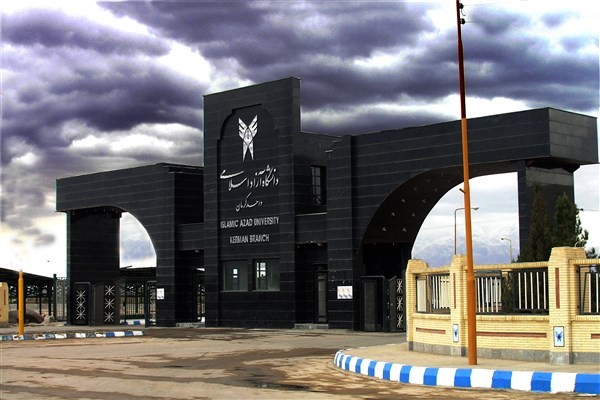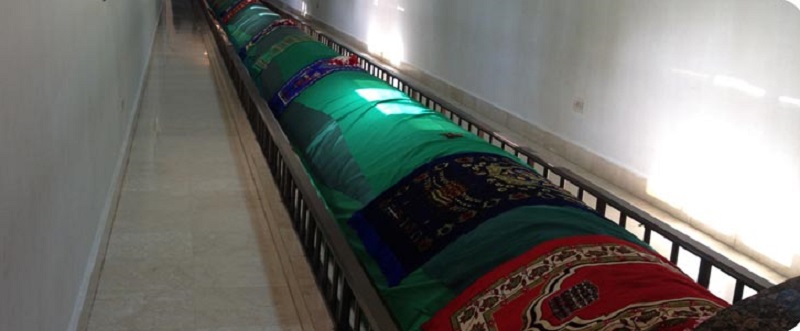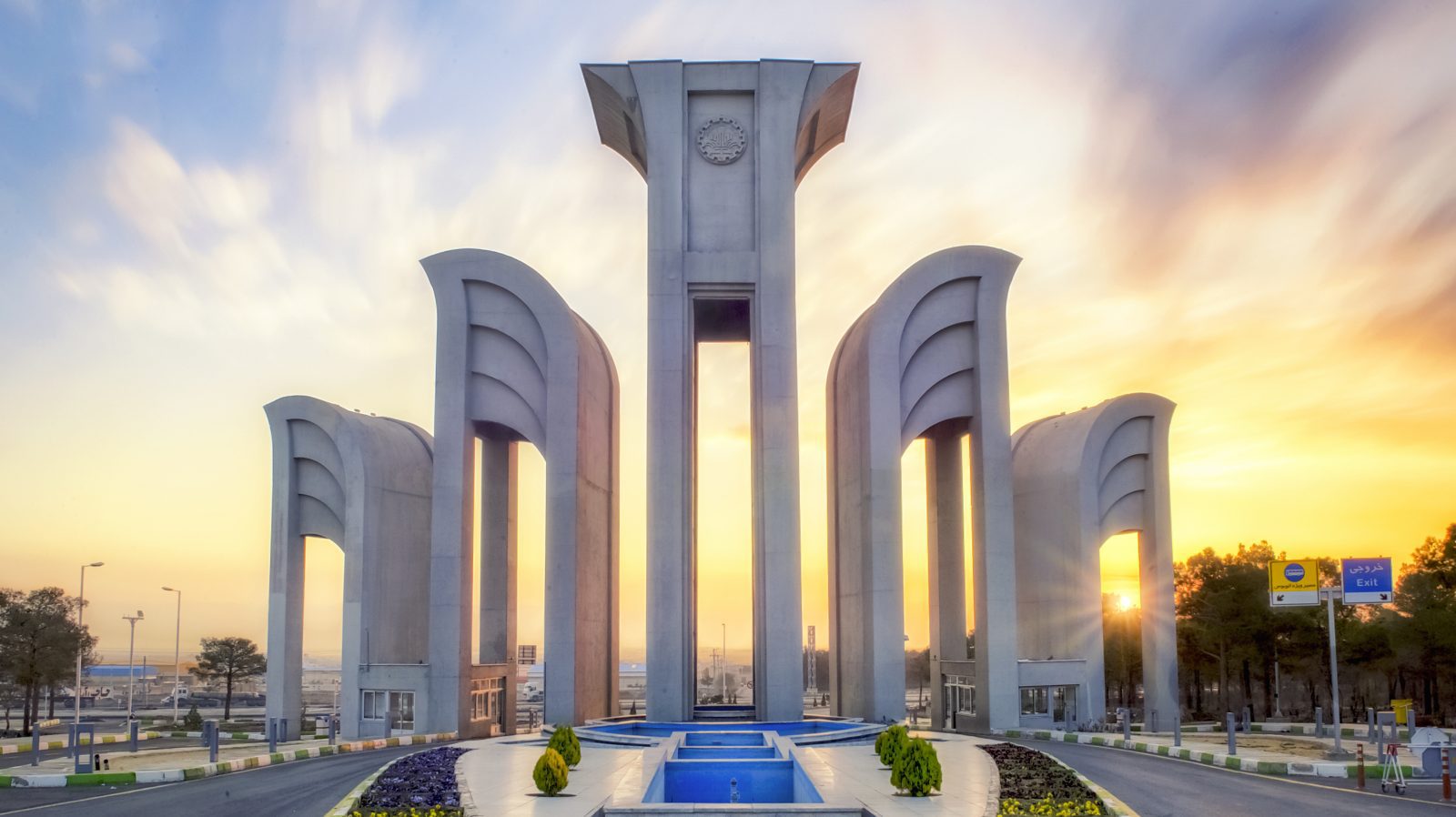Tabriz Carpet: A Distinctive Iranian Rug
Tabriz carpet is one of the various types of Iranian carpets, woven in the city of Tabriz. Tabriz is one of the most significant centers for carpet weaving in Iran, and its carpets are known for their diversity and variety. Currently, Tabriz has been recognized by the “World Crafts Council” as the “World City of Carpet Weaving.”
Types of Tabriz Rugs and Identifying the Best-Selling and Most Expensive Designs in the Market
One of the most crucial questions for enthusiasts of handwoven rugs from the Tabriz region is the exploration of the various types and the recognition of the best-selling and priciest patterns available in the market. When you embark on the quest for handwoven carpets from the Azerbaijan region, particularly the city of Tabriz, it means that the beauty and quality of the design take precedence over the price for you. Rugs from this Iranian region boast a diverse range of models, sharing certain specifications and features.
In this article on the Gulf City Pedia website, we aim to, after a general examination of the main features of different Tabriz rugs, introduce the best-selling designs of these carpets. Using visual aids and photographs, we will thoroughly study all the models to assist you in making the best choice aligned with your taste when making a purchase.
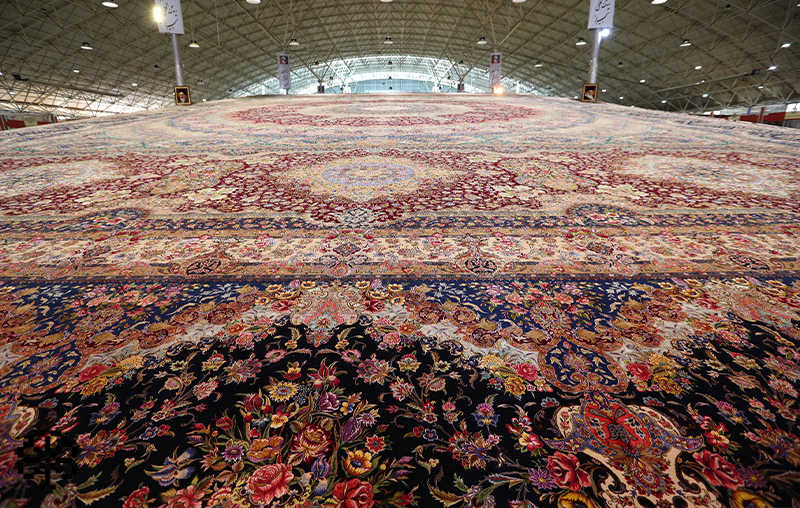
Specifications of Various Types of Tabriz Rugs
Before delving into the specifications and features of different types of Tabriz rugs, it’s essential to note that we have thoroughly studied the handwoven Tabriz rugs and their weaving techniques in the past. If you wish to familiarize yourself more with rugs from this region, we recommend reading that article as well.
The rugs from the city of Tabriz and their designs possess unique specifications and features. Since a detailed study of them is time-consuming, we will provide a concise overview of their characteristics:
- 1) The presence of highly skilled and experienced masters in the field of design and weaving of handwoven rugs in Tabriz has led to the production of carpets in this region that adhere to global standards.
- 2) One notable feature of Tabriz rugs is their extremely high color diversity, which arguably surpasses any domestic or foreign counterparts.
- 3) Quality in weaving is a crucial principle in Tabriz rugs, resulting in most of them being finely woven with a high knot count.
- 4) The use of high-quality and expensive fibers, especially silk and wool, contributes to the durability and strength of Tabriz handwoven rugs.
- 5) The incorporation of subtle shading techniques in the weaving process of this region creates a universal feature across various types of Tabriz rugs, adding depth to their designs.
Types of Tabriz Rugs in Terms of Sales
We don’t intend to tell you which of these designs we are introducing is better or worse for you because this matter is more than anything about your taste and preference.
Our criterion in providing this list is the best-selling types of Tabriz rugs, which we have arranged for you from top to bottom, and the ultimate decision-maker is you.
1. Tabriz Heriz Design Rug
We have previously analyzed Heriz handwoven rugs. Rugs from this region in Azerbaijan have global fame, and many types of Tabriz rugs are woven by copying Heriz rug designs.
One characteristic of Heriz rug patterns is the absence of curved lines, and what you will predominantly observe is the use of geometric Islamic shapes and broken lines.
2. Tabriz Salar Design Rug
Among various types of Tabriz rugs, if you are looking for rugs with dark tones, choosing a Salar design Tabriz rug is undoubtedly one of the best options.
To recognize a Tabriz Salar design rug, it should be noted that in the past, Salar designs were sometimes produced with a single-color background, but almost all contemporary Salar designs have dual tones, meaning the background color is divided into blue and black by a chalk-like line.
These rugs, considered among the expensive and best-selling types of Tabriz rugs, used to be produced with a knot count above 50, but today, they have reduced to 40 knots, making them more economical.
3. Tabriz Fish Design Rug
Among various types of Tabriz rugs, the fish design stands out due to its vibrant colors and minimal use of silk, almost negligible, making it a suitable choice for heavily trafficked areas, such as living rooms and hallways.
Fish design rugs are mostly produced with knot densities of 40 and 50, and previously, higher knot densities were used. However, given the rising production costs, higher knot densities are not economically viable for fish design rugs.
4. Tabriz Aliya Design Rug
This Tabriz rug, compared to the options we have discussed so far, has a lower price and has some characteristics that easily distinguish it among various types of Tabriz rugs:
This handwoven rug predominantly has a cream-colored background and a border in onion or brick color. The center medallion is always circular.
It is one of the best-selling options among Tabriz rug designs, and the reason for this is that this rug, compared to designs like Kheibari, Salar, and Modern Far, has a lower price while using the same quality of weaving and materials.
5. Tabriz Nomai Design Rug
Nomai design is another type of Tabriz rug, also known as the subterranean pattern. This rug has very special characteristics, the most notable of which is the use of vessel and cup motifs throughout.
Another feature that can be introduced for Nomai design is the presence of symmetry in its background. The color palette and patterns used in this rug are very diverse, giving it a beautiful appearance. You can use this design in the entrance of your home or workplace.
Introduction to the Most Expensive Handwoven Tabriz Rug
After exploring the various types of Tabriz rugs, we turn our attention to a historical option, aiming to introduce the most expensive Tabriz rug with global renown:
Rothschild Tabriz Medallion, unfortunately stolen and looted by a German soldier during World War II in Iran, is among the world’s most expensive rugs.
The presence of a unique and distinctive design in this Tabriz rug has led to a price tag of around $70,000. Its high popularity has even resulted in contemporary handwoven rug designs being named “Medallion.”
History of Tabriz Carpets
Concerning the history of carpets in Tabriz, it can be said that, given the city’s historical antiquity, the art of carpet weaving undoubtedly dates back to before the Safavid era. In the latter half of the fifteenth century and during the Safavid period, carpets evolved from a rural craft to an advanced courtly art. Another significant development during this period was the creation of designs by artists in the Tabriz and Herat courts.
According to the book “Rugs and Carpet of the World” by Ian Bennet, there is another theory about Tabriz carpets during the Safavid era: “Many of the medallion or toranj-patterned carpets woven in the early years of the 16th century during the reigns of Shah Ismail I and Shah Tahmasb feature Islamic motifs and animal and human patterns.” The author attempts to attribute some of the rugs found in world museums from the early 16th century to Tabriz workshops.
In the 17th century and beyond, as Persian carpets found their way abroad, Tabriz craftsmen, inspired by the tastes of Europe and America, began weaving carpets that were highly interesting and captured the markets of those countries. Tabriz is one of the most important hubs of carpet weaving in Iran. Its carpets, whether those adorning prestigious world museums or those placed in the collections of avid collectors, or even those flooding markets and bazaars in large quantities for commercial purposes, have always been popular and customer-friendly.
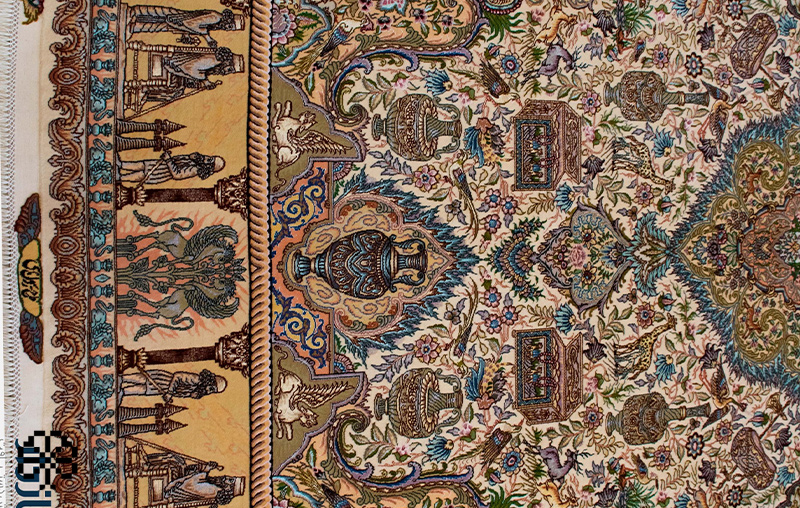
According to statistics from 1985 in the Tabriz region and its outskirts, 16,000 carpet workshops with 32,150 weavers produced carpets. In addition to individual weavers, numerous workshops have been and still are actively involved in carpet weaving for many centuries.
In recent years, skilled Tabriz weavers have turned to producing delicate silk flower carpets with a knot density of 50 and 60. These carpets, some adorned with silk fringes, are mostly woven with intricate paisley and toranj patterns. They typically feature bright beige and khaki colors, and in coloring the flowers and patterns, a variety of shades such as scarlet, crimson, and olive are abundantly used.
Tabriz carpets in the past seventy years have been woven with various designs, including vase, tree, mihrab, lantern, animal, hunting ground, Herati, branch and leaf, carnation, brick band or lattice, scenic weaving, Quranic frame, and geometric patterns of all sizes.
The side and end weaving of Tabriz carpets are not particularly appealing to Tabrizi weavers.
Currently, Tabriz is recognized as a major center for the supply of urban carpets in Azerbaijan. It has become a large center for renowned producers, and Azerbaijan carpets are associated with it.
Tabriz is one of the most important centers of carpet weaving in Iran. Its carpets, whether those decorating prestigious world museums, taking their place in the collections of eager collectors, or flooding markets and bazaars in large quantities for commercial purposes, have always been popular and customer-friendly.
Some Recognized Patterns of Tabriz Carpets
Notable patterns from the Tabriz region include the Mustofi pattern (the whole French Mustofi), Slimi Toranj, Slimi Lachak, Toranj, Fish or Harati pattern, Gol-o-Morgh (floral and bird), Minakhani, Tree pattern, Pictorial pattern, Garden or Golestani pattern, Shikargah (hunting scene), and Mottahari Sidi Bazaar pattern.
New Techniques in Tabriz Carpets
In recent decades, Tabriz carpets have witnessed innovative techniques, bringing a unique quality to the carpets of this region. These innovations manifest in patterns, colors, and textures, resulting in exquisite works in the realm of fine carpet production in Iran, marking a previously unparalleled era of creativity.
Production and Trade Background
The Azerbaijan region, due to its vast pastures, agricultural lands, suitable climate, and mountainous nature, has always been privileged in carpet production. The city of Tabriz, among all carpet-weaving centers in this region, holds a prestigious position and reputation. Tabriz has been a significant hub for the trade and production of carpets, particularly during the Hulagu successors, aligning with Herat.
Especially during the Safavid era, with the establishment of large carpet-weaving workshops, top-notch weavers gathered in this city and engaged in the creation of very fine carpets. Many of these carpets are now part of renowned world museums.
Following the shift of the Safavid capital from Herat to Tabriz, the second Iranian art school (the Tabriz School) was founded. Numerous artists, from various trades and professions, settled in the city, making Tabriz a prominent center for various arts. Carpet weaving, with the establishment of skilled designers such as Behzad and Sultan Mohammad, experienced significant growth. The decline of the Iranian carpet industry during the upheavals after the Afghan invasions was revived during the Qajar era when Iranian carpets, especially those from Azerbaijan, began to be exported to Europe through Turkey.
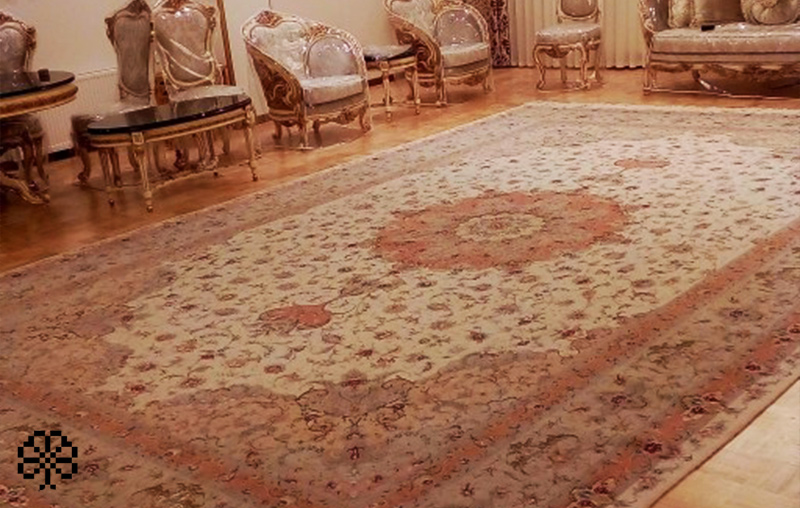
Tabriz played a vital role in the global recognition of Iranian carpet art during the late Qajar period and the early Pahlavi era. The resurgence of Iranian carpets in global markets and the expansion of this craft in other parts of Iran owe much to the merchants, traders, and carpet weavers of Azerbaijan, especially Tabriz. Sisil Edward wrote about the export of Iranian carpets to European and Asian countries: “The trade of these goods was in the hands of Tabrizi merchants, who were well-known and wealthy individuals. Their trading houses had branches in Istanbul. Their main transactions consisted of buying goods from the factories of the western lands and transporting them to Iran through the Trabzon route.”
Among the most significant carpet exporters were Haji Yousef Ghalichi, Haji Abdullah Ghalichi, Haji Mirza Jafar Islamboolchi, Haji Samad Gharaghalichi, Mirza Ali Asghar, Mirza Ali Akbar, Ismaeil Ghalichi, Sadeqiani, Aypakchi, Haji Mohammad Mamaghani, Mahmoud Af, Delmaqani, Awakian, Kasbarian, and Ardabadi.
Currently, Tabriz is recognized as a major center for urban carpet production in Azerbaijan. It has become a significant hub for prominent and reputable producers, with a considerable number of single weavers and numerous workshops involved in carpet weaving in and around Tabriz.
Characteristics of Design and Color
Tabriz weavers, especially in contemporary times, incorporate beautiful designs or a combination of various colors, introducing innovative patterns into their carpets. Various patterns such as Lachak and Toranj, tree, vase, and many others are utilized by contemporary weavers in Tabriz, Mardan, and Khoy. The vibrancy and freshness of color in Azerbaijani urban carpets, particularly in Tabriz, capture the attention of carpet buyers. The beauty of the geometric patterns of Heris carpets is such that many carpet weavers in Tabriz and other cities in Azerbaijan have copied them, presenting them to the market under the name of Heris pattern. The old and authentic Heris pattern is preserved while adding a geometric composition using angular lines, providing a distinct identity to these carpets. The most famous among these patterns is the Broken Branch Lachak and Toranj.
The inclination toward geometric patterns and even abstract thinking is a common feature of rural carpet patterns in Azerbaijan. In 1364, around 32,150 carpet weavers worked on 16,000 looms in the Tabriz region and its surroundings. Apart from individual weavers, numerous workshops, including those of skilled Tabrizi weavers, have been active in recent years. Skilled Tabrizi weavers have turned to producing very delicate silk carpets with a knot count of 50 and 60 on a large scale. These carpets, some of which have silk pile, are mostly woven with Lachak and Toranj patterns and feature bright beige and cream colors. A variety of red, crimson, and olive colors are abundantly used in the coloring of flowers and motifs. Tabriz carpets in recent decades have been woven in various patterns, including vase, tree, mihrab, lantern, animal, hunting scene, Herati, branch and leaf, golferang, brick band, panoramic weaving, Quranic frame, and geometric patterns, in sizes ranging from the smallest to the largest. The border and corner weaving is not particularly attractive to Tabriz weavers.
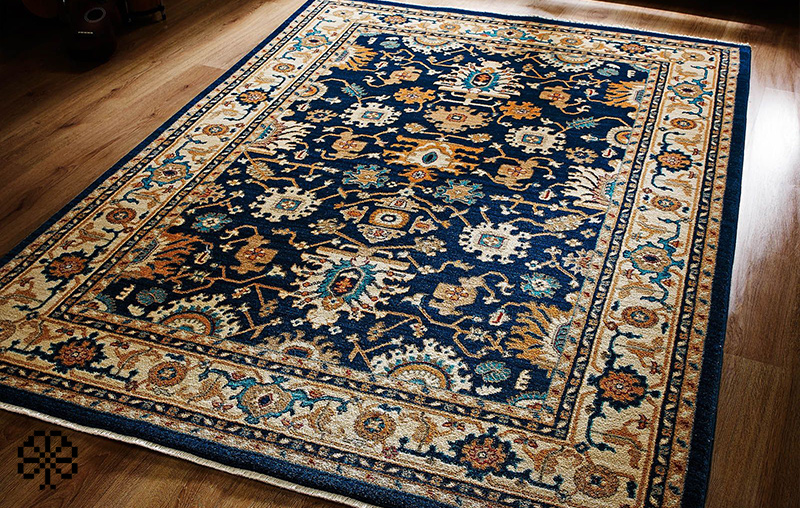
Evolution in Tabriz Carpet Coloring
Displaying Depth
One of the new features in the contemporary coloring of Tabriz carpets is the use of depth and perspective in these two-dimensional designs, giving a unique identity to Tabriz carpets.
Color for Spatial Division
Another transformation in Tabriz carpet innovations is the use of color to fill empty spaces instead of relying solely on patterns. By employing harmonious colors that coordinate with the design, a beautiful relationship between pattern and color is established. This technique is visible in new underground patterns.
Utilizing Bright Shadows
Another innovation in Tabriz carpets is the use of shadow through color. The unlimited use of harmonious colors and the creation of bright shadows evoke depth. The contrast between cool and warm colors also plays a role, with the presence of these shadows and highlights giving motifs and flowers a prominent appearance. This method has made flowers look more natural and brought them closer to a realistic style.
Avoidance Technique
The use of white and colored silk to avoid overcrowding of flowers and leaves is another characteristic of Tabriz carpets.
Underground Pattern
One of the Tabriz carpet patterns is the underground pattern. This style is characterized by special colors, especially beige, olive, and sage, which create an underground effect. The elements of these patterns are inspired by ancient structures, depictions of kings, literary figures, and poets from Iran’s past.
Texture Features in Tabriz Carpets
Among the common features of all Azerbaijani carpets, the Turkish knot receives the most attention. The type of Kilim weaving in Azerbaijani village and nomadic carpets, especially in older carpets, is mostly in the famous Persian style, meaning a thick weft is used for Kilim weaving. The knot count in Azerbaijani village carpets is generally coarse, ranging between 15 and a maximum of 25 knots. The warps used in Azerbaijani carpets, except for nomadic carpets, are all of the vertical type. The most important dimensions of new urban Azerbaijani carpets are 2×3, 2.5×3.5, and 3×4, and smaller dimensions are mostly seen in older carpets. Circle and polygonal dimensions have also become popular in recent years in this region. The warp count of Tabriz carpets usually starts from 24 and continues up to 110 knots. The knot count, known as knot density, is considered the best method for evaluating the quality of a carpet; the higher the knot count, the better the quality. Finer Tabriz carpets are usually woven with silk or cotton threads.
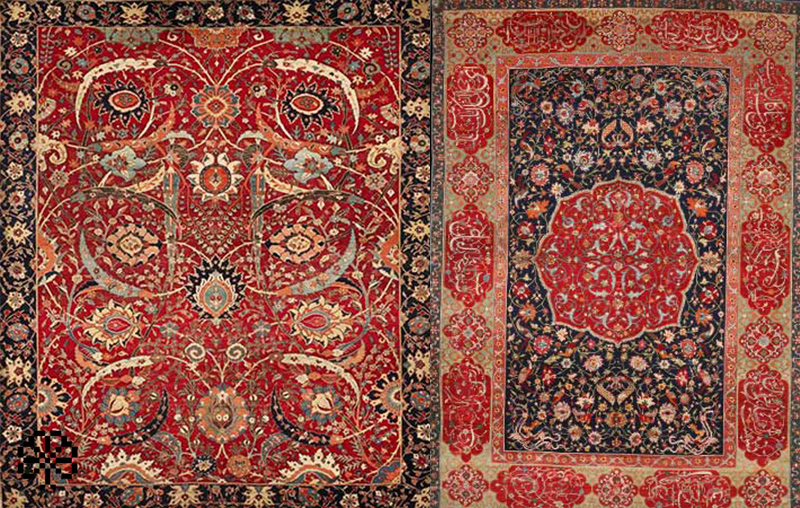
Tabriz is one of the largest and most important carpet-weaving centers globally, playing a crucial role in the development and expansion of decorative and applied arts. The peak of Tabriz carpet art dates back to the 12th to 16th centuries AD. The formation of 200 artistic masterpieces of Tabriz carpets, integrating the harmony of Iranian weaving and painting arts over 14 centuries, showcased the high level of carpet weavers’ artistry in this city and laid the foundation for the classical Tabriz school. This school is divided into two main branches: Tabriz and Ardabil.
Conclusion
In this article, we have endeavored to thoroughly examine the various types of Tabriz rugs and introduce the most popular and expensive designs. This information may assist you in making the best choice when purchasing. If you have any questions or comments about the content and topics discussed, feel free to share them with us in the comments section.


